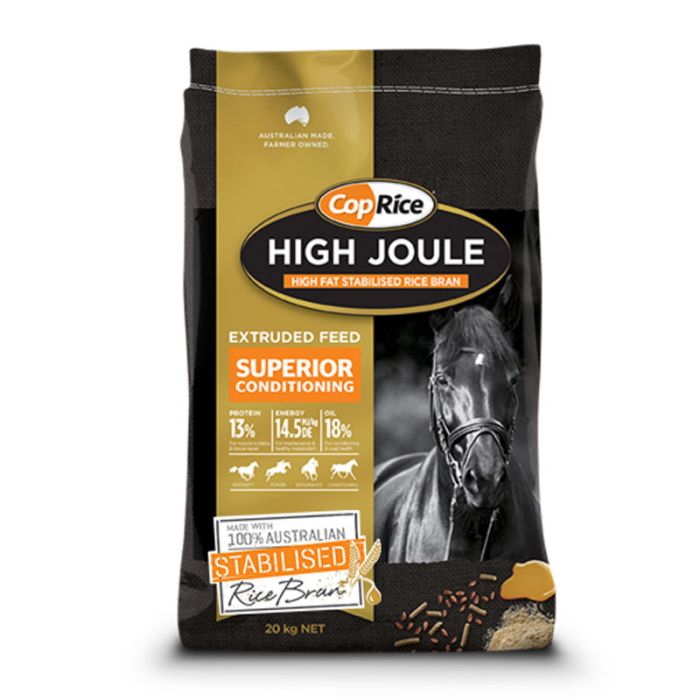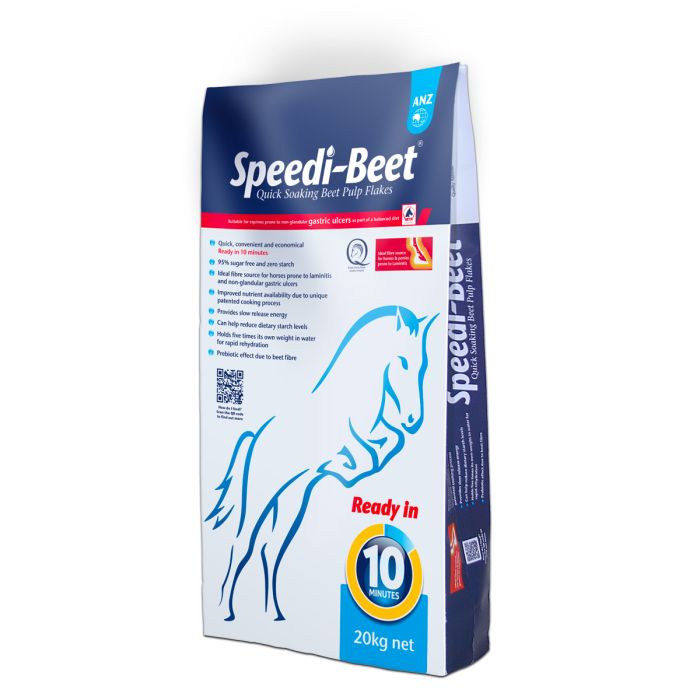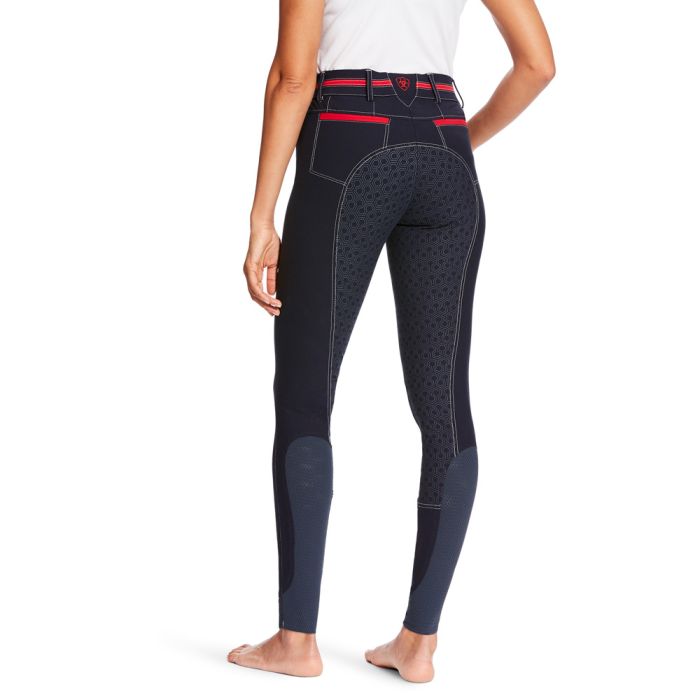High Joule 20kg - Coprice
COP-22993
Coprice High Joule
- Ultra-high fat supplement
- For superior conditioning, intensity & endurance
High Joule 20kg
Coprice
An ultra-high fat and energy dense feed supplement, excellent for boosting energy, muscle development, building topline and weight gain.Rich in naturally occurring antioxidants, amino acids lysine and methionine, and a source of omega fatty acids, it helps strengthen immunity, build muscle mass and provides superior skin and coat health. It is ideal for horses in sale preparation, in sustained exercise, and for horses and ponies benefitting from improved conditioning.
- 13% PROTEIN - FOR MUSCLE BUILDING & TISSUE REPAIR
-
14.5MJ/kg ENERGY - FOR MAINTENANCE & HEALTHY METABOLISM
-
18% OIL - FOR CONDITIONING & COAT HEALTH
An ultra-high fat and energy dense feed supplement, excellent for boosting energy, muscle development, building topline and weight gain.
Rich in naturally occurring antioxidants, amino acids lysine and methionine, and a source of omega fatty acids, it helps strengthen immunity, build muscle mass and provides superior skin and coat health. It is ideal for horses in sale preparation, in sustained exercise, and for horses and ponies benefitting from improved conditioning.
- Extruded feed supplement
- For superior conditioning, intensity & endurance
- Ultra-high fat & energy dense
- Excellent for building mass & topline
Daily Feeding Guide
Suggested Feeding Rate (Kg/Day)
| BODY WEIGHT (KG) | DAILY RECOMMENDED | DAILY MAXIMUM |
| 300 | 0.3 – 0.6kg | 1.8kg |
| 400 | 0.4 – 0.8kg | 2.4kg |
| 500 | 0.5 – 1.0kg | 3.0kg |
| 600 | 0.6 – 1.2kg | 3.6kg |
- Feed a minimum of 1% of your horse’s body weight daily with high quality roughage such as hay, pasture and/or chaff.
- High Joule feed can be fed at a rate of up to 30% of the daily ration e.g. approximately 3kg High Joule feed for a 500kg horse, based on a feed consumption of 2% bodyweight.
- High Joule feed is not a complete feed, it is designed to be fed in conjunction with other ration ingredients.
- Ensure horses always have access to clean, cool and fresh water.
Suggested feeding rates to be used as a guide only. The amount of feed required will depend on the quality of the pasture/forage, exercise intensity, dentition, metabolism and condition of the horse.
Nutrient Levels Per kg Feed
(On an as fed basis)
| TYPICAL ANALYSIS | VITAMINS . | MACRO-MINERALS | FATTY ACIDS | |
| Crude Protein | Min. 13% | Vitamin E | Calcium | Oleic (Omega 9) |
| Crude Fat | Min. 18% | Vitamin B1 | Magnesium |
Linoleic (Omega 6)
|
| Energy (DE) | Min. 14.5MJ | Vitamin B2 | Phosphorus |
Alpha Linoleic (Omega 3)
|
| Crude Fibre | Max. 10% | Vitamin B3 | Potassium |
|
| Salt | Nil | Vitamin B5 |
|
|
| Carbohydrate | Max. 25% | Vitamin B6 | MICRO-MINERALS |
AMINO ACIDS
|
| Calcium | 2.25% | Folic Acid | Cobalt |
Lysine
|
| Phosphorus | 1.5% | Choline | Copper | Methionine |
| Selenium | 1mg | Biotin | Iodine | |
| Vitamin E | 1000mg | Iron | ||
| Manganese | ||||
| Selenium | ||||
| Zinc | ||||
The health and performance benefits of rice bran in equine feed are well documented, having been researched in Australian and international studies. Rice bran contains:
- A highly digestible form of concentrated energy.
- A rich source of monounsaturated fatty acids for heart and blood vessel health.
- A good source of natural vitamin E, which is a powerful antioxidant that helps protect tissues against oxidative damage and also supports immune function.
- A range of trace elements important for bone, cartilage and joint health, and for improving immune function and metabolism.
- A source of the essential amino acids including methionine for hoof integrity, and lysine for building muscle protein.
- A high rice bran oil content (up to 20%), which provides a dense source of energy. Using oil as an energy source conserves glycogen reserves in muscles, helping to delay fatigue and improve stamina
- Gamma oryzanol is a natural anabolic plant compound, which promotes muscle development and definition. The rice bran oil contained in rice bran may enhance the digestion of starch in the small intestine, for rice bran oil slows the rate of digestion through a horse’s stomach and intestinal passage. This allows for more time for complete digestion of starch and helps reduce the risk of acidosis, colic and laminitis, which are associated with the fermentation of starch in the horse’s hindgut.



